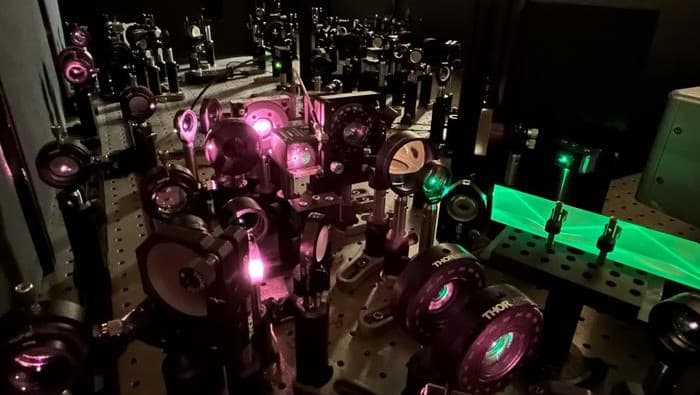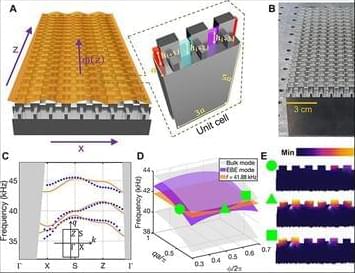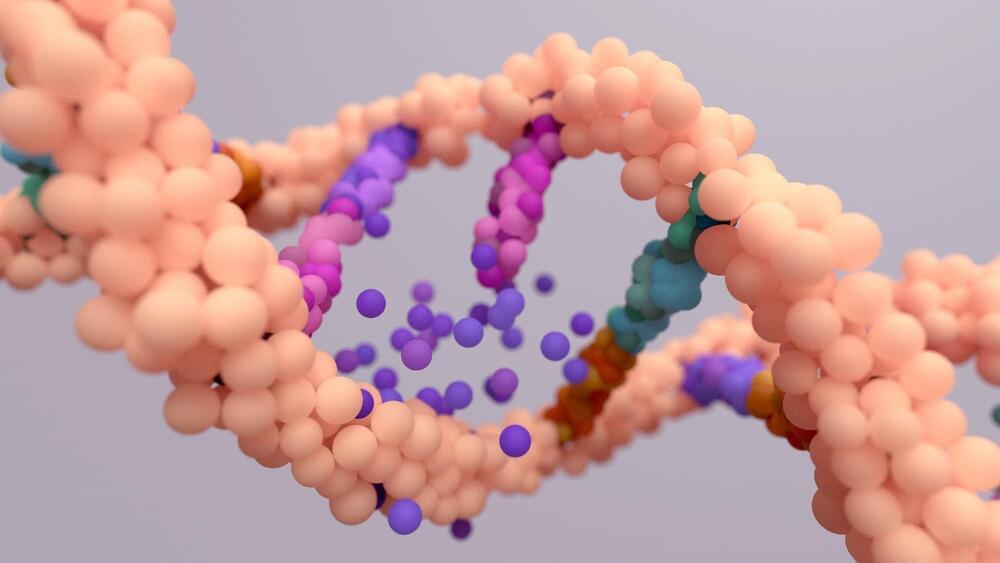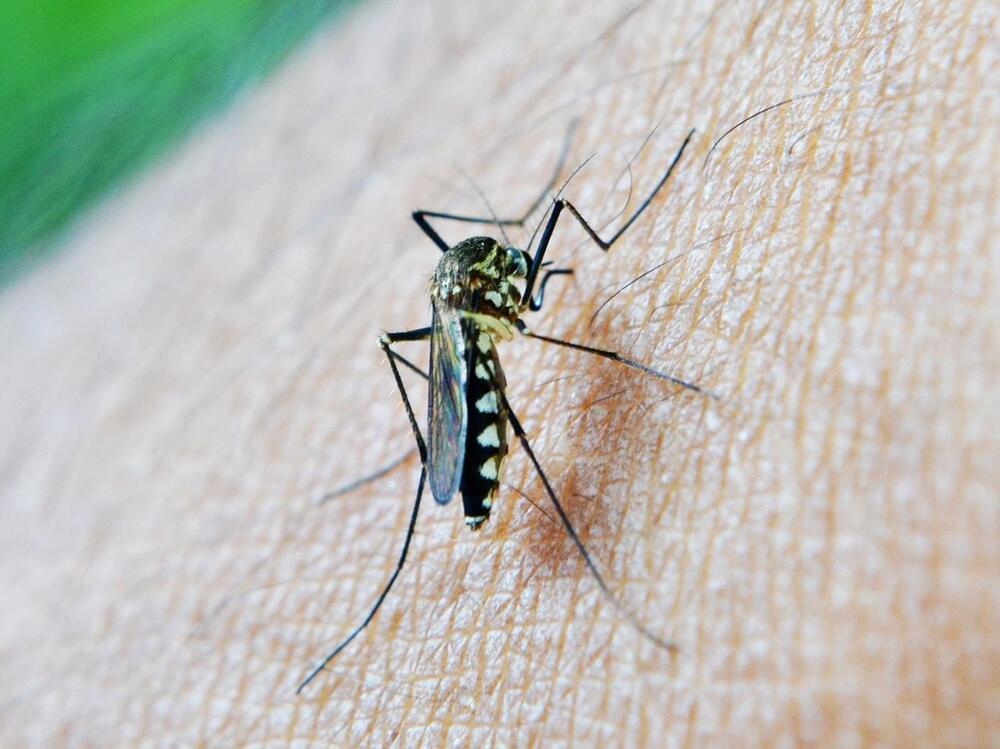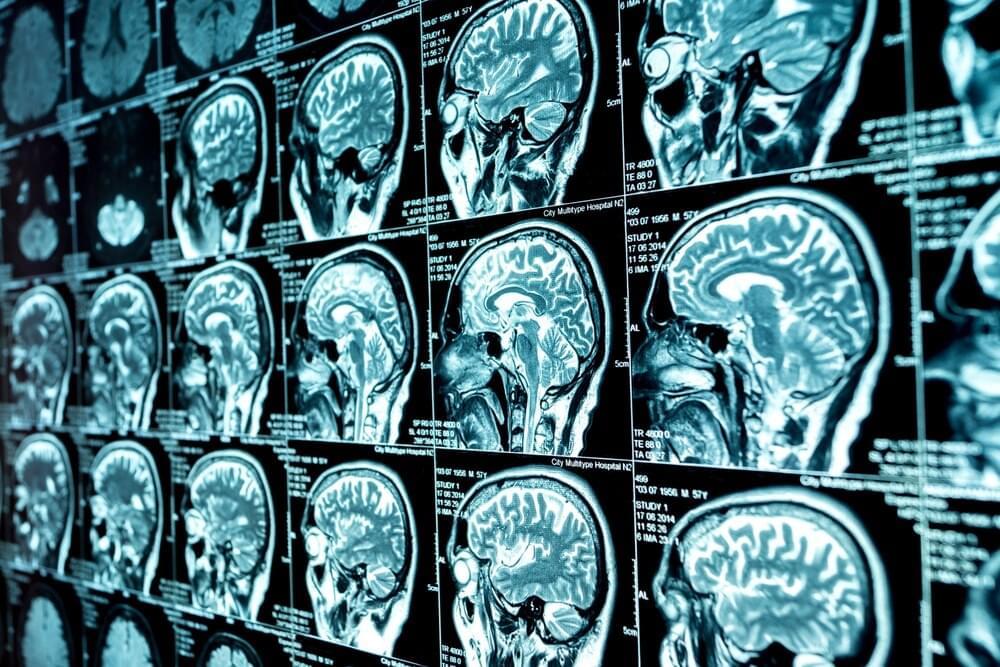Page 1552
Aug 7, 2023
Smart patterning for topological pumping of elastic surface waves
Posted by Saúl Morales Rodriguéz in category: futurism
Aug 7, 2023
Similarities in gene expression between post-mortem and living human brains
Posted by Shubham Ghosh Roy in categories: biotech/medical, health, neuroscience
An important objective of medical research is to identify the underlying molecular mechanisms of human brain health and diseases.
This objective has been predominantly achieved through observational studies of gene expression in human brain tissues obtained from post-mortem brain donors for their analysis. Importantly, many of these studies are based on the assumption that gene expression in the post-mortem human brain is an exact representation of gene expression in the living human brain.
A recent study published on the medRxiv preprint server challenges this assumption by comparing human prefrontal cortex gene expression between living and post-mortem samples.
Aug 7, 2023
Researchers may have solved the ‘mirror twins’ defect plaguing the next generation of 2D semiconductors
Posted by Paul Battista in categories: internet, nanotechnology, particle physics, robotics/AI
The next generation of 2D semiconductor materials doesn’t like what it sees when it looks in the mirror. Current synthesizing approaches to make single-layer nanosheets of semiconducting material for atomically thin electronics develop a peculiar “mirror twin” defect when the material is deposited on single-crystal substrates like sapphire. The synthesized nanosheet contains grain boundaries that act as a mirror, with the arrangement of atoms on each side organized in reflected opposition to one another.
This is a problem, according to researchers from the Penn State’s Two-Dimensional Crystal Consortium-Materials Innovation Platform (2DCC-MIP) and their collaborators. Electrons scatter when they hit the boundary, reducing the performance of devices like transistors. This is a bottleneck, the researchers said, for the advancement of next-generation electronics for applications such as Internet of Things and artificial intelligence. But now, the research team may have come up with a solution to correct this defect. They have published their work in Nature Nanotechnology.
This study could have a significant impact on semiconductor research by enabling other researchers to reduce mirror twin defects, according to lead author Joan Redwing, director of 2DCC-MIP, especially as the field has increased attention and funding from the CHIPS and Science Act approved last year. The legislation’s authorization increased funding and other resources to boost America’s efforts to onshore the production and development of semiconductor technology.
Aug 7, 2023
New Vaccine Technology Controls Malaria
Posted by Shubham Ghosh Roy in categories: biotech/medical, genetics
Malaria is a possibly fatal disease caused by a parasite transferred by mosquitos to humans. Common symptoms include fever, chills, and flu-like traits. According to the Centers for Disease Control (CDC), around 2,000 cases of malaria are diagnosed in the United States per year. The diagnosis is common in individuals coming back from Africa or Asia. On a global scale, about 700,000 people die from malaria, and most are children. However, death from malaria can usually be prevented with early detection and proper medical care. Researchers are trying to proactively target malaria by developing a new vaccine using genetic material.
Researchers from the Victoria University of Wellington’s Ferrier Research Institute, the Malaghan Institute of Medical Research, and the Peter Doherty Institute for Infection and Immunity have all worked together to develop a vaccine that can effectively stimulate cells in the immune system against malaria-causing parasite, Plasmodium. The vaccine, described in Nature Immunology, is designed to generate resident memory cells in the liver to combat Plasmodium. Resident memory cells are a type of immune cell that reside in tissues throughout the body to target invading pathogens that enter those tissues.
The vaccine is made with messenger ribonucleic acid (mRNA), as opposed to peptides or proteins. The difference between the two is the type of material delivered by the vaccine. Peptide-based vaccines use peptides from the virus to elicit an immune response. Alternatively, mRNA vaccines use mRNA extracted from the virus. In this study, the researchers originally used a peptide-based vaccine but recently found mRNA improves the activation of resident immune cells to kill malaria-based pathogens. The treatment result was significant between the two types of vaccines because the peptide-based vaccine had small fragments of protein and could not stimulate the immune system effectively, while the mRNA could encode for an entire malaria protein.
Aug 7, 2023
How does the circulating proteome influence brain health?
Posted by Shubham Ghosh Roy in categories: biotech/medical, health, neuroscience
A recent study posted to the medRxiv preprint server investigates the association between the circulating proteome and brain health.
Study: The circulating proteome and brain health: Mendelian randomisation and cross-sectional analyses. Image Credit: Abduramanova Elena / Shutterstock.com.

 *Important notice: medRxiv publishes preliminary scientific reports that are not peer-reviewed and, therefore, should not be regarded as conclusive, guide clinical practice/health-related behavior, or treated as established information.
*Important notice: medRxiv publishes preliminary scientific reports that are not peer-reviewed and, therefore, should not be regarded as conclusive, guide clinical practice/health-related behavior, or treated as established information.
Aug 7, 2023
Dell Technologies & NVIDIA Collaborate On Full-Stack Generative AI Solutions
Posted by Gemechu Taye in category: robotics/AI
Generative AI, in particular, is placing new demands on IT teams across nearly every industry. The GPUs required for generative AI are expensive and power-hungry, and you may need many. Aligning storage to keep those data-hungry GPUs fed requires adopting new technologies, such as NVIDIA’s GPUDirect, that enable applications to transfer data from primary storage directly into the GPU’s memory. The software stack looks unlike nearly anything else in enterprise IT. The list goes on and on.
Dell Technologies and NVIDIA are working together to reduce the complexity of building and deploying infrastructure for Generative AI. The two companies announced Project Helix earlier this year at Dell Technologies World, which Dell described as delivering full-stack solutions with technical expertise and pre-built tools based on Dell and NVIDIA infrastructure and software.
Aug 7, 2023
AI robots can now do manicures and other beauty treatments
Posted by Gemechu Taye in categories: business, robotics/AI
Will they replace human cosmetics workers?
A report by CBS News.
The article outlined several AI firms that have entered the industry and shared their point of view on its progress.
Continue reading “AI robots can now do manicures and other beauty treatments” »
Aug 7, 2023
Adopting robots will cause a business’s profits to decline at first
Posted by Gemechu Taye in categories: business, robotics/AI
It turns out robots have a ‘U-shaped’ effect on profits.
Researchers from the University of Cambridge have found that investment in robots can cause a firm’s profits to first decline before rising again, resulting in a so-called ‘U-shaped’ effect on profits.
This is according to a report by TechXplore published on Thursday.
Continue reading “Adopting robots will cause a business’s profits to decline at first” »
Aug 7, 2023
China will now use robots to maintain its FAST telescope
Posted by Gemechu Taye in categories: robotics/AI, space
The machines have been tested and found more than competent.
China will soon allow intelligent robotic systems and platforms to provide maintenance services for the nation’s Five-hundred-meter Aperture Spherical Radio Telescope (FAST), dubbed as the ‘China Sky Eye’ and known as the world’s largest single-dish radio telescope, the China Media Group (CMG)
The news was reported by CGTN after the robotic systems passed several tests ensuring they were ready for this lofty task.
